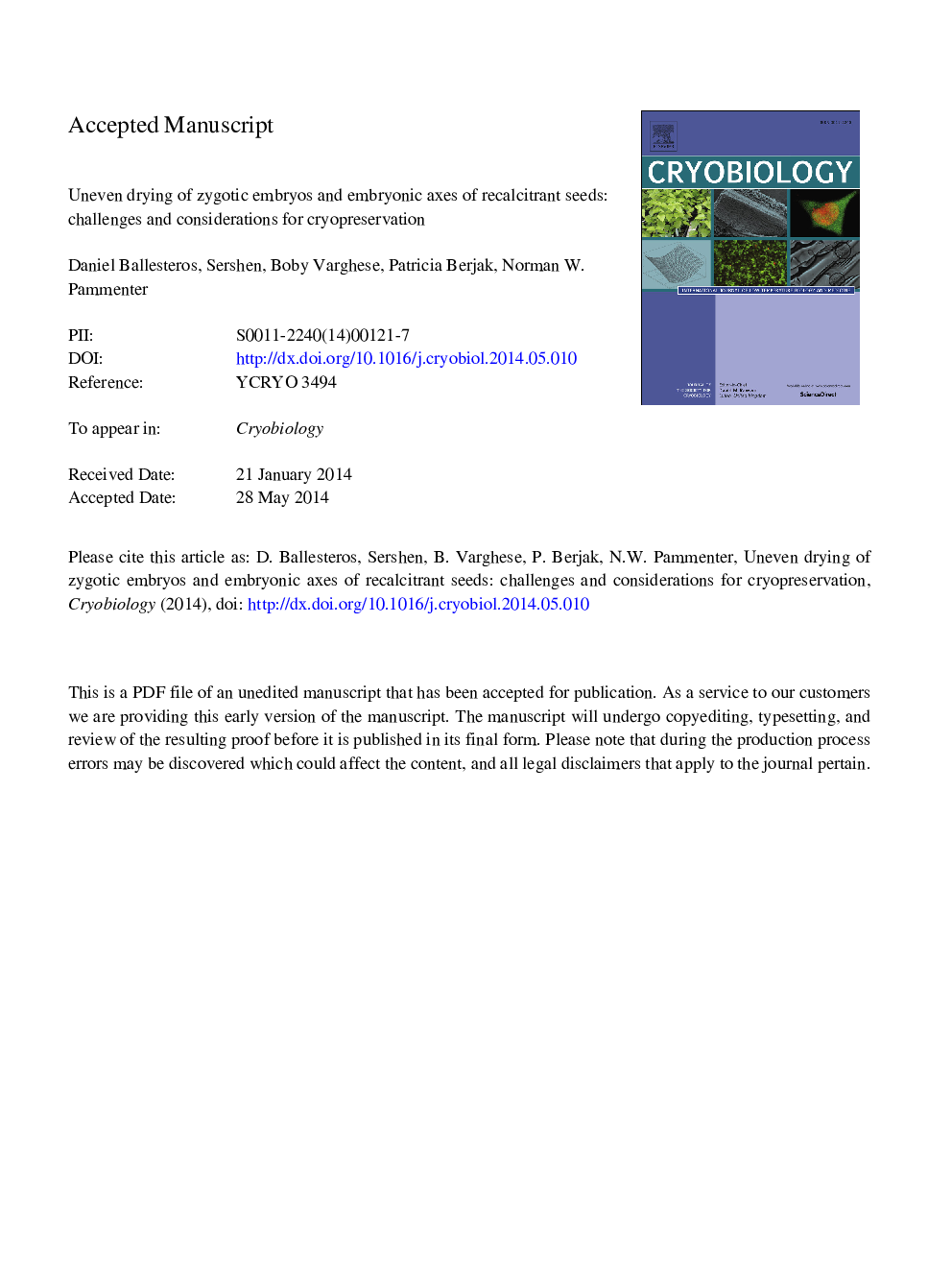| کد مقاله | کد نشریه | سال انتشار | مقاله انگلیسی | نسخه تمام متن |
|---|---|---|---|---|
| 10928186 | 1092899 | 2014 | 44 صفحه PDF | دانلود رایگان |
عنوان انگلیسی مقاله ISI
Uneven drying of zygotic embryos and embryonic axes of recalcitrant seeds: Challenges and considerations for cryopreservation
ترجمه فارسی عنوان
خشک شدن بی حد و حصر جنین های زگوت و محور های جنینی دانه های بازدارنده: چالش ها و ملاحظات برای حفظ فریز
دانلود مقاله + سفارش ترجمه
دانلود مقاله ISI انگلیسی
رایگان برای ایرانیان
کلمات کلیدی
فریزر خشک کردن فلش، سرکوب کننده، دانه، محتوای آب، گیاه زنجانی،
موضوعات مرتبط
علوم زیستی و بیوفناوری
علوم کشاورزی و بیولوژیک
علوم کشاورزی و بیولوژیک (عمومی)
چکیده انگلیسی
Cryopreservation is the most promising option for the long-term germplasm conservation of recalcitrant-seeded species. However, the variable post-cryo success achieved with the excised zygotic explants traditionally used for cryopreservation has been a concern for some time. Differential drying rates amongst explants of different species, uneven drying amongst explants within a batch of seeds and uneven drying across tissues within individual embryos could be contributory factors to this variable success and these phenomena form the foci of the present study. Using zygotic explants from a range of recalcitrant-seeded species, which included sub-tropical dicotyledonous trees and sub-tropical monocotyledonous geophytes, the study showed that embryo morphology and anatomy are critical determinants of the drying characteristics of the different tissues composing the explant and hence, post-cryo survival. The results suggest that the rates of drying of explants to water contents (WCs) in the theoretically optimal range for successful cryopreservation are species-specific, and that more rapid drying rates may promote post-cryo survival. However, the large variation in WC amongst individual explants in bulk samples challenges the selection of the theoretically optimum WC for cryopreservation. As a consequence of differential drying rates across the different tissues composing explants, either lethal ice crystal damage or desiccation damage may sometimes be likely in tissues responsible for the onwards development of the embryo. Drying times for cryopreservation of such explants should, therefore, be selected on the basis of WC of segments containing root or shoot meristem, rather than embryo bulk WC. Drying intensity and duration also interact with explant morphology and embryo/axis size and anatomy to bring about - or preclude - post-cryo survival.
ناشر
Database: Elsevier - ScienceDirect (ساینس دایرکت)
Journal: Cryobiology - Volume 69, Issue 1, August 2014, Pages 100-109
Journal: Cryobiology - Volume 69, Issue 1, August 2014, Pages 100-109
نویسندگان
Daniel Ballesteros, Sershen Sershen, Boby Varghese, Patricia Berjak, Norman W. Pammenter,
